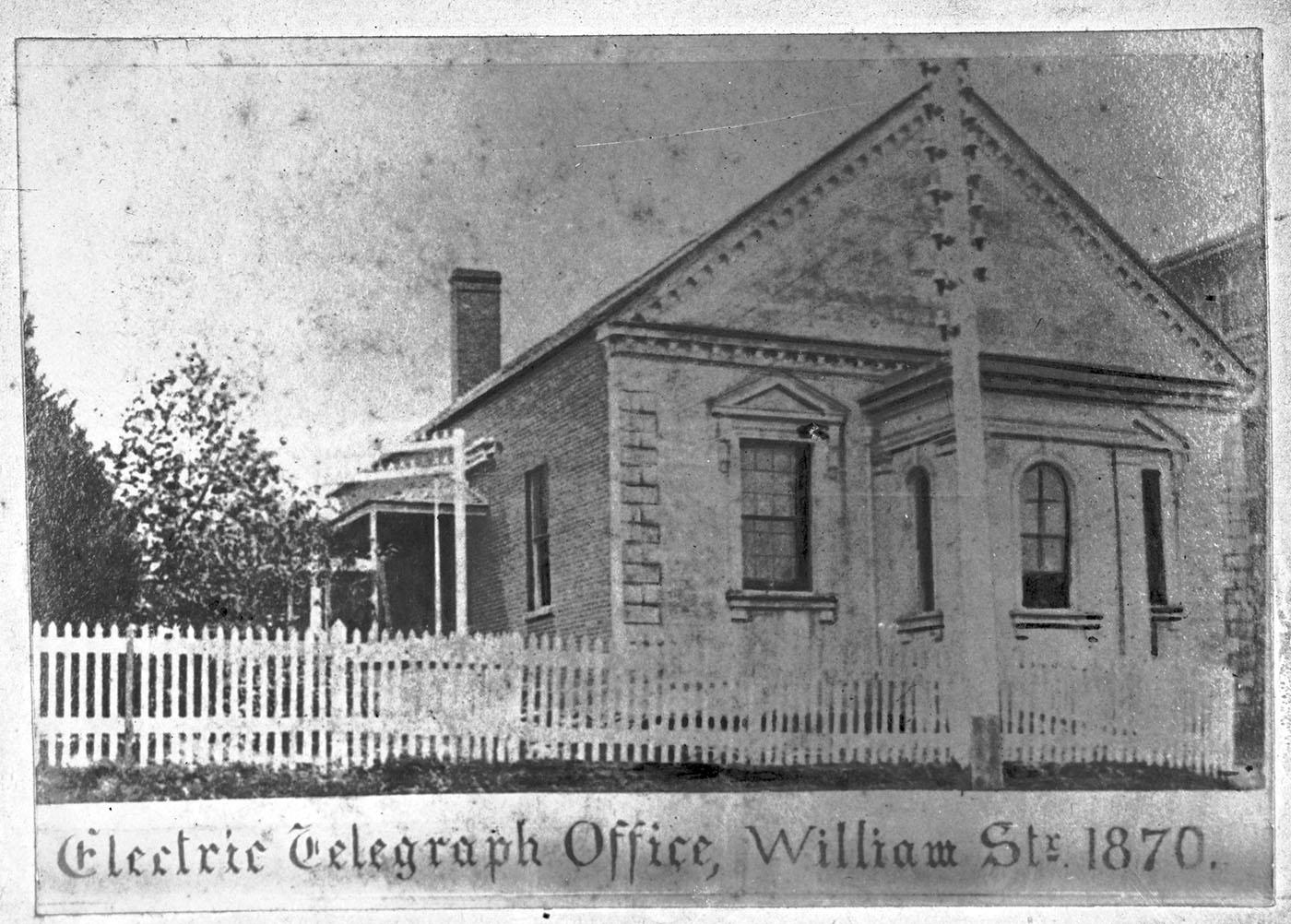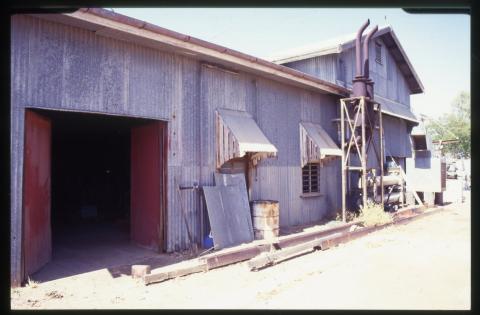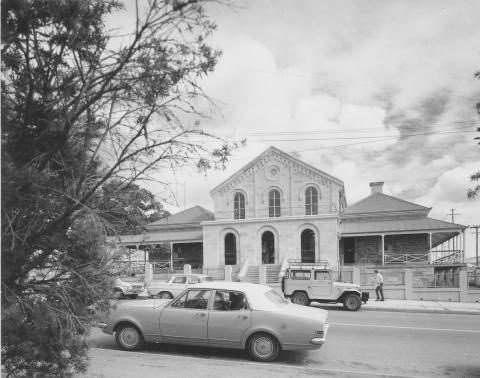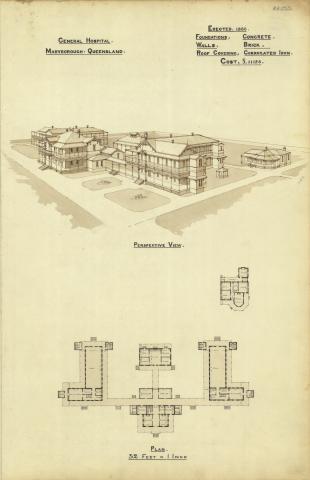
- News of the day
-
Queenslander, Saturday 19 September 1891, page 533
Electric Telegraph Department.
Many years ago, when the office of the Electric Telegraph Department was situated near the Government Printing Office, in William-street, the amount of business transacted was comparatively small to what it is at the present time. In the first few years of the department's existence, there was but one principal line—namely, that from Brisbane to Tenterfield, and two minor lines, one branching from the main line at Toowoomba, and connecting with Dalby, and the other forming what was called the Bay line and running to Lytton. The demands for speedy transmission have, however, increased to such an extent that in the present building there are now twenty-six instruments working, including a quadruple system to Bowen and another to Sydney, and duplex systems to both Rockhampton and Tambo. The quadruple system admits of two messages being received and two despatched simultaneously, and the duplex permits of a message being received and another despatched at the same time. The suburbane line can, if necessary, be also worked by two machines. The single instruments are all Morse circuit machines and ink markers and are fitted with the latest improvements devised in the art of telegraphy.
When in 1879 the staff entered into occupation of the present offices in Queen-street, it was regarded as likely to meet all requirements for many years to come, but as the number of lines increased the space for the operators became quite inadequate. The operating tables were scattered about the room without much attempt at order, and their place had a general dingy look which could not favourably impress visitors with the importance of this branch of the Government service. The operators had to content themselves with sitting through their long hours of duty perched on high stools, as the tables were too high to allow of chairs being used. The department have now made a change in the arrangements which cannot fail to give satisfaction to those interested. The instruments were recently transferred to the A.M.P. Buildings to enable extensive alterations to be made. The old room was then thoroughly renovated and re-floored and the walls freshly painted. Instead of the separate tables which had been formerly used, two light cedar tables now occupy the middle of the floor, a roomy passage being left between. The tables run nearly the whole length of the room, and are each divided into fifteen compartments, the spaces being separated by frosted glass frames. The various machines in use are new, and are fitted up on these tables, the wires running to the roof direct. Each operator is provided with a chair, fitted with a screw of the music stool pattern, which allows him to raise or lower his position at pleasure. A drawer is also placed in each compartment. Formerly the lights in the operating-room were close to the desk of the operator, but a row of electric lamps are now suspended from the centre of the roof. This arrangement prevents the glare to which the operators were previously subjected, and gives a steady and brilliant light. To provide for cases of emergency gas jets have been fixed at the tables. The officer in charge has a raised desk placed against the middle of the right hand wall, which enables him to completely control the work of the room. A cloakroom has been fitted up adjoining the operating-room. An interesting feature of the room is the lightning-arrester, which, by connection with the earth, carries off any lightning that may be attracted to the wires, and thus prevents the fusing of the fine wires at the instruments. On Saturday last repairs had been completed, and everything was announced to be in readiness for removal from the A.M.P. Buildings. Arrangements were at once made for disconnecting the wires with the machines there, and completing the connection with the new instruments in the permanent office. The employees were mustered in the operating-room, and briefly addressed by the Postmaster-General, who took ocoasion to impress upon them the advantages which they would enjoy under the new arrangements, and the necessity for a strict performance of their duties as a return for the comforts that had been afforded them. Mr. T. H. Cowl, manager of the Electric Telegraph Department, also said a few words, hoping that the men would show their appreciation of the efforts of the department on their behalf. He called for three cheers for the Postmaster-General, and his request was heartily responded to. The employees then entered upon their duties in the permanent office, only thirty minutes having elapsed from the time they ceased work in the temporary offices. The transfer was completed without a hitch of any kind. The old instruments and the high desks are to be consigned to outstations as required. There is now ample space for an extra number of instruments should they be necessary, and the arrangements of the operating-room of the Electric Telegraph Department, Brisbane, are at present equal to any one in the colonies.
- Background
-
TBA
/153.0243604,-27.4730288,7/450x450@2x.png?access_token=pk.eyJ1IjoicXNhLWRpc2NvLXFsZCIsImEiOiJjamJmdTgyZXEyeWNjMnlxZm8xcmtieHgxIn0.lmT9J5tTPKGuuccQgCVSAg)



